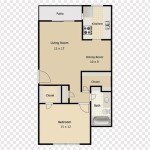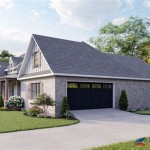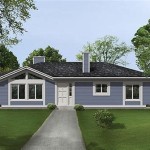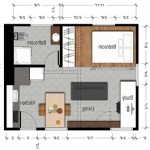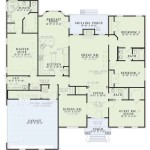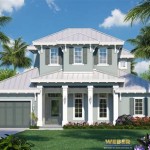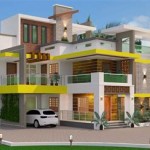Eco-Friendly House Plans: Designing for Sustainability
The growing awareness of environmental concerns has spurred a significant shift in architectural design, leading to a surge in the popularity of eco-friendly house plans. These designs prioritize sustainability, energy efficiency, and minimal environmental impact, aiming to create homes that are both comfortable and responsible. Eco-friendly house plans encompass a variety of strategies, from material selection to energy optimization and water conservation, all contributing to a reduced carbon footprint.
Designing an eco-friendly home involves a holistic approach that considers the entire lifecycle of the building, from the initial planning stages to construction, occupancy, and eventual deconstruction or renovation. It requires careful consideration of the site's climate, orientation, and natural resources to optimize the building's performance. This article will delve into the key aspects of eco-friendly house plan designs, highlighting the principles, materials, and technologies that contribute to sustainable living.
Passive Solar Design: Harnessing Natural Energy
Passive solar design is a fundamental principle of eco-friendly house plans. It involves orienting the building to maximize sunlight exposure during the colder months and minimize it during the warmer months, thereby reducing the reliance on artificial heating and cooling systems. This is achieved through strategic window placement, overhangs, and thermal mass.
South-facing windows are crucial for capturing sunlight during winter. The sun's rays can directly heat the interior spaces, providing warmth and reducing the need for supplemental heating. Overhangs, awnings, or strategically placed deciduous trees can shade these windows during the summer, preventing excessive heat gain and maintaining a comfortable indoor temperature. Proper insulation is essential to retain heat in the winter and keep the house cool in the summer. Well-insulated walls, roofs, and floors minimize heat transfer, reducing energy consumption.
Thermal mass materials, such as concrete, brick, or stone, can absorb and store solar energy during the day and release it slowly during the night, moderating temperature fluctuations and creating a more stable indoor environment. The placement of thermal mass within the building is critical to its effectiveness. It should be located where it can receive direct sunlight during the day and radiate heat into the living spaces at night.
Effective passive solar design requires a thorough understanding of the local climate and solar angles. Architects use specialized software to model the building's performance under various conditions, optimizing the design for maximum energy efficiency. Factors such as shading from nearby buildings or trees must also be considered.
Sustainable Materials: Minimizing Environmental Impact
The selection of sustainable materials is another cornerstone of eco-friendly house plans. These materials have a lower environmental impact compared to conventional building materials, considering factors such as embodied energy, resource depletion, and waste generation. Sustainable materials are often locally sourced, recycled, or renewable.
Recycled materials, such as recycled steel, glass, and plastic, reduce the demand for virgin resources and divert waste from landfills. These materials often have similar or superior performance characteristics compared to their virgin counterparts. Reclaimed wood, sourced from old buildings or fallen trees, is another excellent option for sustainable building. It adds character and reduces the need to harvest new timber.
Renewable materials, such as bamboo, straw bale, and wood from sustainably managed forests, offer a low-impact alternative to non-renewable resources. Bamboo is a fast-growing grass that regenerates quickly, making it a highly sustainable material for flooring, paneling, and structural components. Straw bale construction utilizes tightly packed bales of straw as insulation and structural support, creating highly energy-efficient and environmentally friendly homes. Wood certified by organizations like the Forest Stewardship Council (FSC) ensures that it comes from forests managed in a responsible and sustainable manner.
Low-VOC (volatile organic compound) paints, adhesives, and sealants are essential for maintaining healthy indoor air quality. Conventional building materials often release harmful chemicals that can contribute to indoor air pollution. Choosing low-VOC alternatives minimizes these emissions, creating a healthier living environment. Natural insulation materials, such as sheep's wool, cellulose, and cotton, are also good options for eco-friendly construction. They are non-toxic, biodegradable, and offer excellent thermal performance.
The embodied energy – the total energy consumed throughout a product's lifecycle, from raw material extraction to manufacturing, transportation, and disposal – is an important consideration when selecting materials. Materials with lower embodied energy contribute to a smaller carbon footprint for the building as a whole. Life cycle assessments (LCAs) can be used to compare the environmental impacts of different materials and make informed decisions.
Water Conservation: Reducing Consumption and Waste
Water conservation is a critical aspect of eco-friendly house plans, particularly in regions facing water scarcity. Efficient plumbing fixtures, rainwater harvesting systems, and greywater recycling systems can significantly reduce water consumption and minimize the strain on local water resources.
Low-flow toilets, showerheads, and faucets can reduce water usage without compromising performance. These fixtures are designed to use less water while maintaining adequate pressure and flow. Dual-flush toilets offer the option of using less water for liquid waste, further reducing consumption. Aerated faucets mix air with water, creating a consistent stream while using less water overall. Showerheads with flow restrictors limit the amount of water used per minute, providing a water-efficient showering experience.
Rainwater harvesting systems collect rainwater from rooftops and store it in tanks for later use. This water can be used for irrigation, toilet flushing, and laundry, reducing the reliance on municipal water supplies. The size of the rainwater harvesting system should be determined based on the local rainfall patterns and the household's water demand. Proper filtration and disinfection are essential to ensure the water is safe for non-potable uses.
Greywater recycling systems treat wastewater from showers, sinks, and washing machines, making it suitable for non-potable uses such as irrigation and toilet flushing. Greywater is relatively clean compared to blackwater (wastewater from toilets), so it requires less treatment. Greywater recycling can significantly reduce the demand for fresh water, particularly for outdoor uses. Local regulations may govern the installation and use of greywater recycling systems, so it is important to comply with all applicable requirements.
Landscaping choices also play a role in water conservation. Xeriscaping, a landscaping technique that uses drought-tolerant plants, minimizes the need for irrigation. Native plants are well-adapted to the local climate and require less water, fertilizer, and pesticides compared to non-native species. Designing the landscape to capture and retain rainwater, such as using swales and rain gardens, can further reduce the need for irrigation.
Efficient irrigation systems, such as drip irrigation and micro-sprinklers, deliver water directly to the plant roots, minimizing water loss due to evaporation and runoff. These systems can be automated to water plants only when needed, based on soil moisture levels and weather conditions. Regular maintenance of irrigation systems is essential to ensure they are operating efficiently and preventing leaks.
By integrating these water conservation strategies into eco-friendly house plans, homeowners can significantly reduce their water footprint and contribute to the sustainable management of water resources.
Beyond these key areas, other considerations in eco-friendly house plan designs include energy-efficient appliances, proper ventilation to maintain indoor air quality, and smart home technologies that automate energy management. Thoughtful planning and execution are essential to creating a truly sustainable and comfortable living space.

Eco Friendly Home Plans House Design

The Top 10 Sustainable Home Design Trends In 2024

Winners Of Habitat For Humanity S Sustainable Home Design Competition Archdaily

Pin By Lisa Smith On Eco House Design Friendly Sustainable

Eco Friendly Home Designs Salter Spiral Stair

Green Building Designs Plans And Guidelines

The Top 10 Sustainable Home Design Trends In 2024

Eco Friendly Home Infographics Ecological House Futuristic Design

Eco Houses 7 Most Beautiful Sustainable Builds From Forest Dwellings To City Homes Gardens

21 Sustainable House Design Ideas Fontan Architecture

